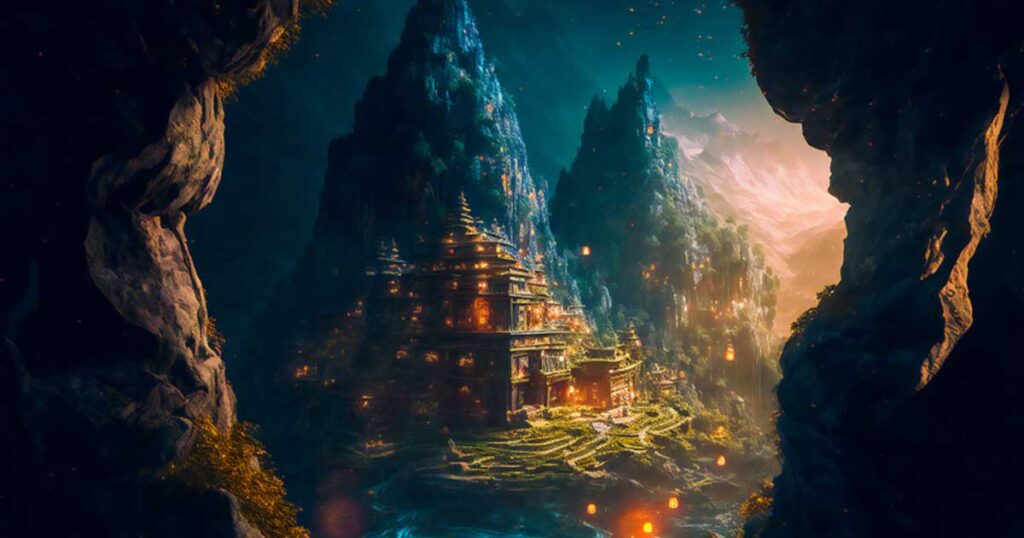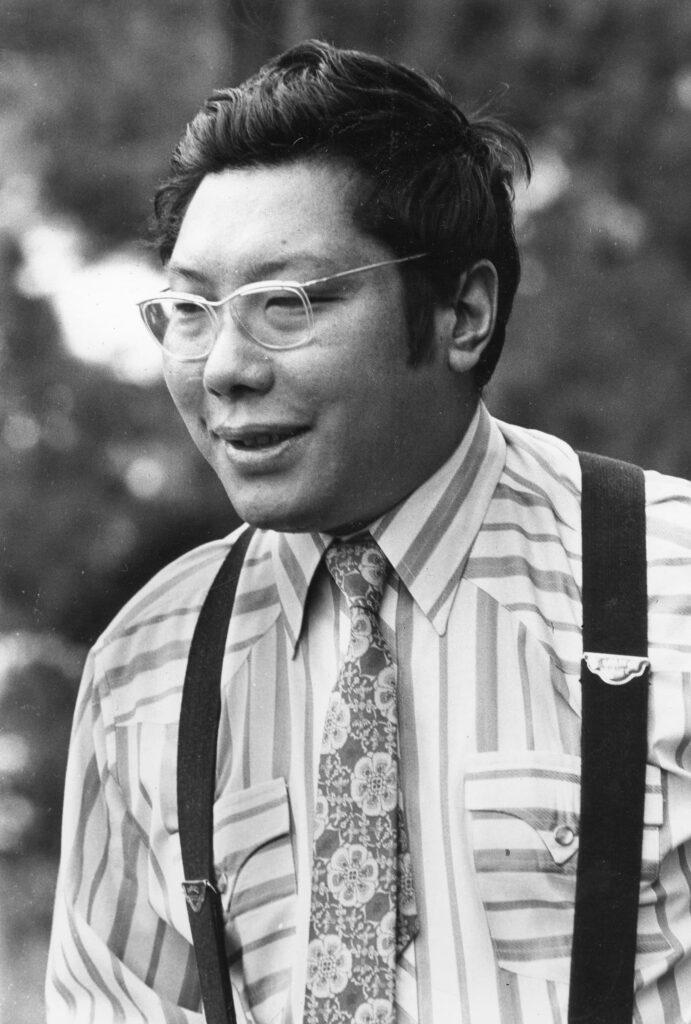Shambhala is a mythical place in both Hindu and Buddhist mythology. Europeans sought for years to find this much-talked-about location, but it does not exist on the physical plane.
Speaking of Shambhala in 1985, the 14th Dalai Lama said:
Although those with special affiliation may actually be able to go there through their karmic connection, nevertheless it is not a physical place that we can actually find. We can only say that it is a pure land, a pure land in the human realm. And unless one has the merit and the actual karmic association, one cannot actually arrive there.

The Origins of Shambhala
The first mention of Shambhala can be found in the Vishnu Purana, an ancient Hindu text.
The Vishnu Purana dates back to the fourth century. Although, it may have originated as many as one thousand years earlier.
It predicted that the eighth incarnation of Vishnu would be born in a city called Shambhala. He would grow up to destroy a group of invaders, thereby ending the Age of Disputes and ushering in a golden age of peace.
Early in the eleventh century, Shambhala appeared again – this time in a Buddhist text called the Kalachakra Tantra. The word Kalachakra can be translated as ‘Wheel of Time’ or ‘Cycles of Time’.
In this text, it is written that the king of Shambhala will travel to India for the Kalachakra teachings and bring them back to his people. Seven generations later, a new king called Kalki will arise and unify all the people of India, abolishing the caste system.
Many generations after this, the twenty-fourth successor of Kalki will drive out invaders and usher in a new golden age, just as the Vishnu Purana predicted.
European Interpretations of Shambhala
The first record of Shambhala by a European dates back to the early 17th century. The Portuguese missionary Estêvão Cacella heard of a place called Shambhala (written as Xembala in his records) when he visited a Tibetan monastery in 1627.
In 1833, the Hungarian scholar Csoma de Körös wrote an article on the Kalachakra that mentions Shambhala. Körös also wrote the first Tibetan-English dictionary.
Later European writers grouped it with other mythical lost lands such as Atlantis. Others took the old stories more literally and set out to find the lost land of Shambhala, without success.
Rudolf Steiner (1861-1925) was best known for his Waldorf educational philosophy and biodynamic agricultural theories. He believed that the location of Shambhala would be revealed with the second coming of Christ.
As late as the 1920s, people were still actively seeking Shambhala. The Russian couple Helena and Nikolai Roerich led an expedition through the Altai Mountains between 1925 and 1928 in search of it.
Eventually, he returned and founded Agni Yoga. He continued to speak of Shambhala as a land of peace and perfect spiritual practice.
Alice Bailey (1880-1949) wrote of Shambhala as a force that could be used for either good or evil. According to her writings, it is located in the astral realm and is the place where the Lord of Earth and Humanity dwells.
Even Adolf Hitler sent several expeditions to Tibet, partially in an attempt to find and contact Shambhala.
Shangri-La
Shambhala inspired the fictional location of Shangri-La, first described in James Hilton’s 1933 novel Lost Horizon.
When a plane crash lands in the Kunlun Mountains of Tibet, the survivors take shelter in the lamasery of Shangri-La. This fictional community is equipped with every modern convenience, and they decide to stay.
This novel served to keep the concept alive in the popular imagination.
Shambhala International
The ancient concept of Shambhala inspired a secular meditation practice called Shambhala Training. It was created by the Tibetan Buddhist meditation teacher Chögyam Trungpa in the 1970s.
Trungpa used the name Shambhala to emphasize the idea that an enlightened society is achievable through mindfulness and meditation.
Trungpa was raised in Tibetan monasteries. He ran his own by the age of twenty, but fled after his monastery was destroyed by Chinese occupying forces. He journeyed through the mountains on foot with hundreds of other refugees and eventually escaped.

He established Vajradhatu in 1973, and the organization was later renamed Shambhala International. There are over two hundred Shambhala Meditation Centers worldwide.
Trungpa’s Teachings
Trungpa taught that meditation was a way to connect with one’s “basic goodness”. His book Shambhala: The Sacred Path of the Warrior taught that humans can create an enlightened society from one moment to the next.
They do this by releasing ego-driven behaviors and being brave enough to adhere to the basic goodness within. He wrote:
Now it gives me tremendous joy to present the principles of Shambhala warriorship and to show how we can conduct our lives as warriors with fearlessness and rejoicing, without destroying one another… I have been presenting a series of “Shambhala teachings” that use the image of the Shambhala kingdom to represent the ideal of secular enlightenment, that is, the possibility of uplifting our personal existence and that of others without the help of any religious outlook. For although the Shambhala tradition is founded on the sanity and gentleness of the Buddhist tradition, at the same time it has its own independent basis, which is directly cultivating who and what we are as human beings.
Chogyam Trungpa
His approach was not limited to seated meditation. He sought to bring mindfulness to every part of the day. Additionally, he advocated for creating a life that incorporates art whenever possible through practices such as dance, poetry, flower arranging, and self-care.
Despite the beautiful theories that he preached, the traumas that Trungpa endured led to terminal alcoholism and an early death. He led a big, controversial life, and his teachings endure.
The Key Tenets
The key tenets of Shambhala Training include:
- Basic Goodness: Diametrically opposed to the idea of original sin, this tenet proclaims that human nature is essentially good
- Warriorship: These teachings describe the path of the warrior as one of decency, bravery, dignity, and gentleness
- Drala: The use of sensory perception to overcome mental fixations
- Heaven and Earth: The role of humanity is to connect reality (Earth) to what is possible (Heaven)
Shambhala Training teaches how to find contentment, joy, and wisdom in everyday life.
The name Shambhala has also been used for schools, retreats, and a publishing house. It’s also the name of fictional locations in multiple video games.

